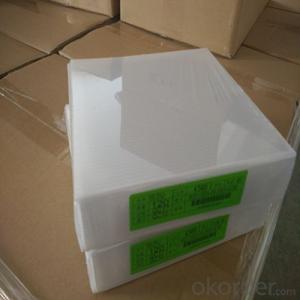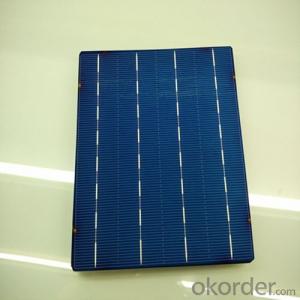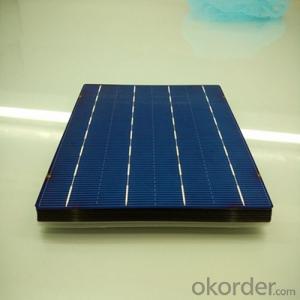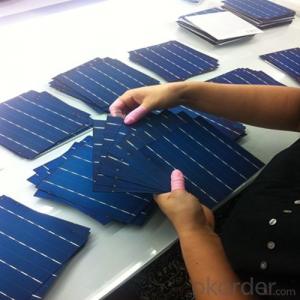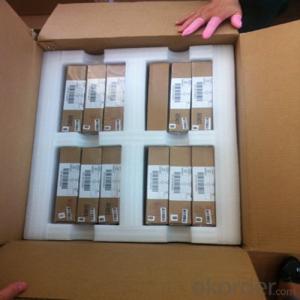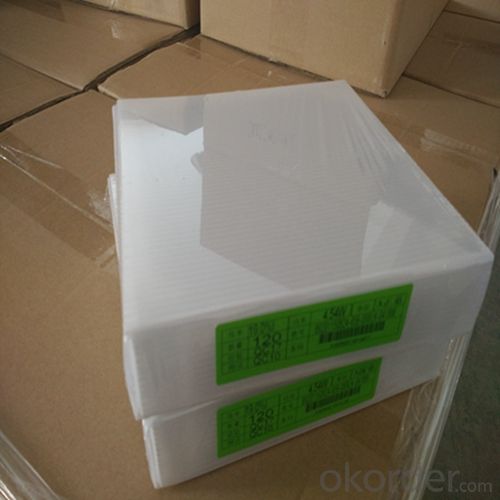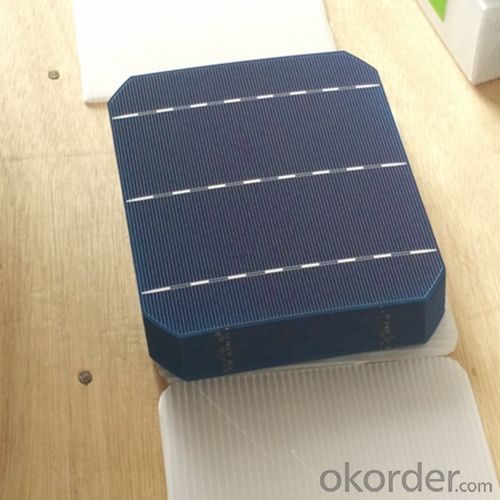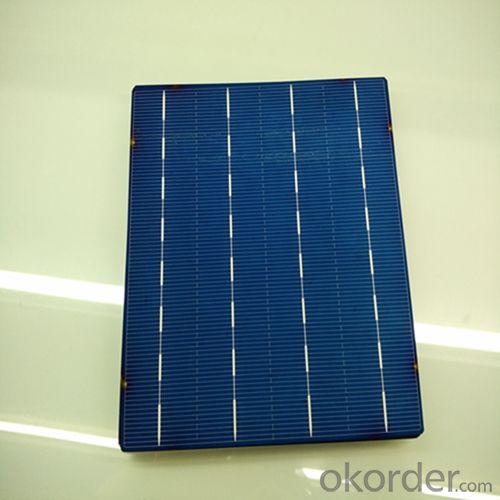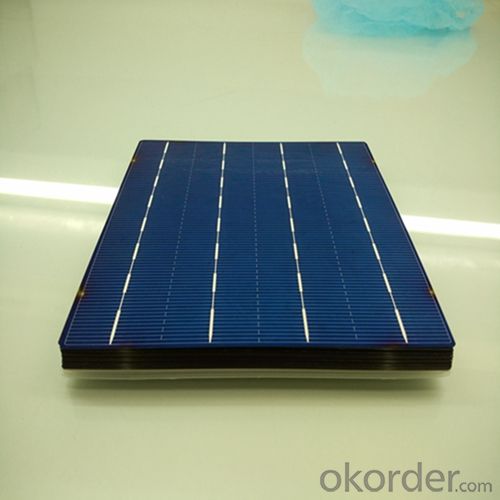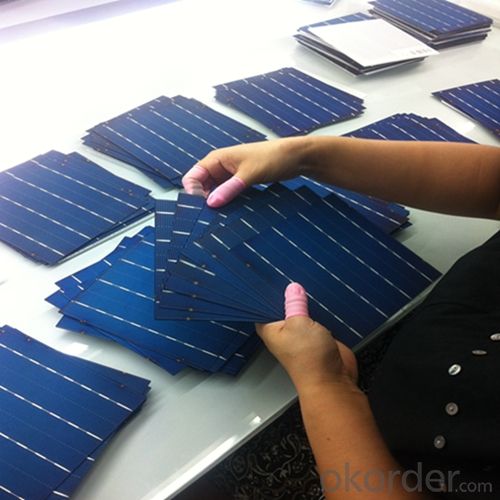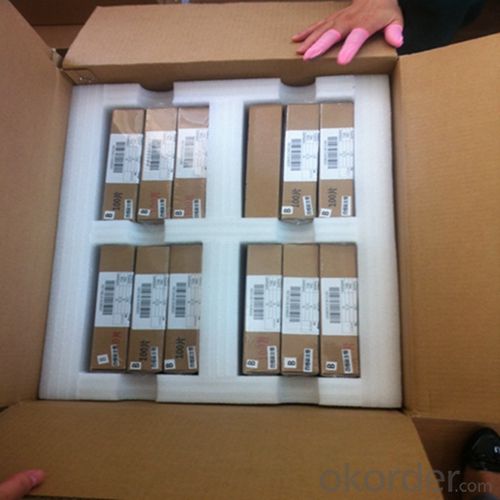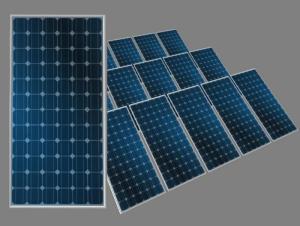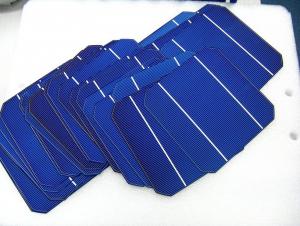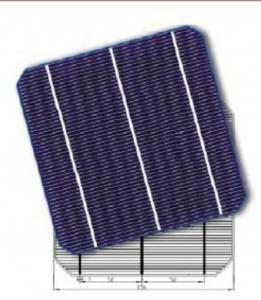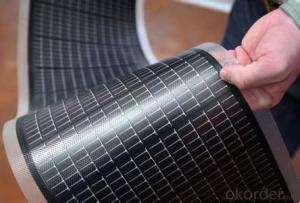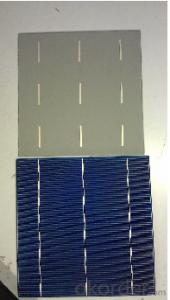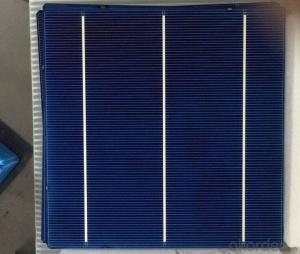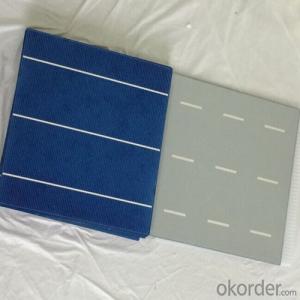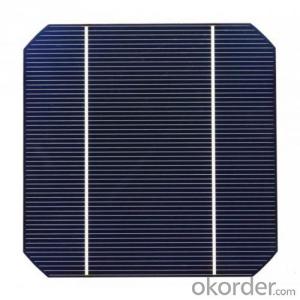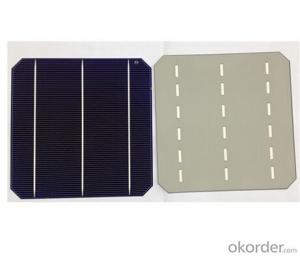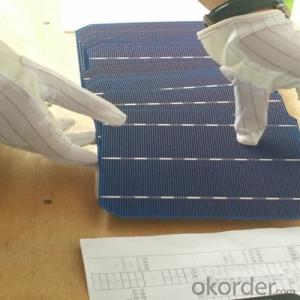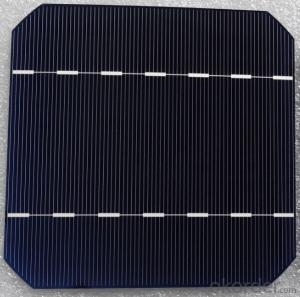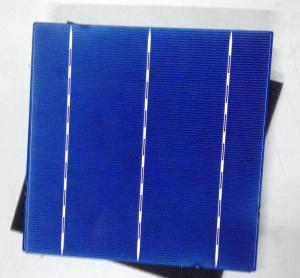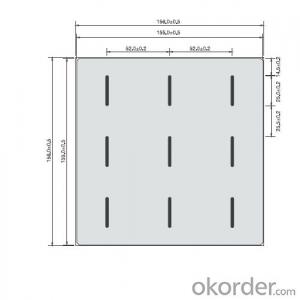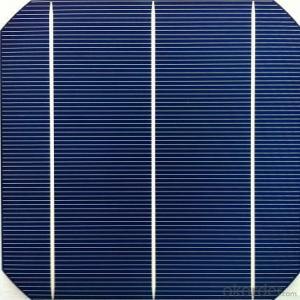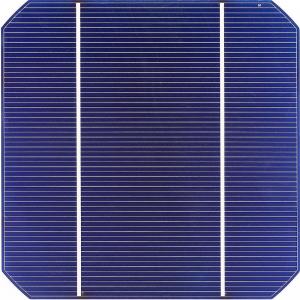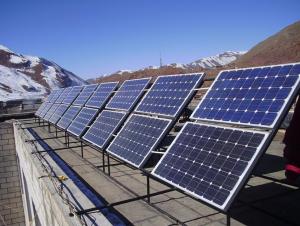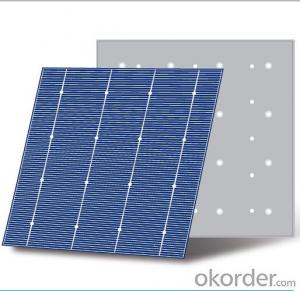Multijunction Solar Cells:Mono 156x156mm2 Solar Cells Made Low Price
- Loading Port:
- Shanghai
- Payment Terms:
- TT OR LC
- Min Order Qty:
- 4000 watt
- Supply Capability:
- 650000 watt/month
OKorder Service Pledge
OKorder Financial Service
You Might Also Like
Benefits of Solar Power:
Now is a great time to go solar and harvest the power of the sun. Here is our top ten list of the benefits to installing solar power:
When installed, solar energy is free – no resources are consumed
Help to lessen our dependence on heavily polluting coal power stations
Fossil fuels can't last forever, future generations will appreciate the effort
Characteristic of Mono 156X156MM2 Solar Cells
You are gaining energy independence - add battery backup power for even greater energy security
The cost of electricity is only going to rise – insure against that rising cost
Quality solar power and water adds value and appeal to your home
Specifications of Mono 156X156MM2 Solar Cells
Solar PV systems are easily upgraded in future - aim to make your house a net energy producer!
Solar panels offer a long lifetime of low maintenance service, maybe 30-40 years
Your friends will think you're great!
You'll feel great for doing your bit for the environment!
Mechanical data and design
Format | 156mm x 156mm±0.5mm |
Thickness | 210μm±40μm |
Front(-) | 1.5mm bus bar (silver),blue anti-reflection coating (silicon nitride) |
Back (+) | 2.5mm wide soldering pads (sliver) back surface field (aluminium) |
Temperature Coefficient of Cells
Voc. Temp.coef.%/K | -0.35% |
Isc. Temp.coef .%/K | +0.024%/K |
Pm.Temp.coef. %/K | -0.47%/K |
Electrical Characteristic
Effiency(%) | Pmpp(W) | Umpp(V) | Impp(A) | Uoc(V) | Isc(A) | FF(%) |
18.35 | 4.384 | 0.526 | 8.333 | 0.63 | 8.877 | 78.39% |
18.20 | 4.349 | 0.526 | 8.263 | 0.63 | 8.789 | 78.54% |
18.05 | 4.313 | 0.525 | 8.216 | 0.63 | 8.741 | 78.32% |
17.90 | 4.277 | 0.524 | 8.161 | 0.625 | 8.713 | 78.04% |
17.75 | 4.241 | 0.523 | 8.116 | 0.625 | 8.678 | 77.70% |
17.60 | 4.206 | 0.521 | 8.073 | 0.625 | 8.657 | 77.36% |
17.45 | 4.170 | 0.519 | 8.039 | 0.625 | 8.633 | 76.92% |
17.30 | 4.134 | 0.517 | 8.004 | 0.625 | 8.622 | 76.59% |
17.15 | 4.096 | 0.516 | 7.938 | 0.625 | 8.537 | 76.80% |
17.00 | 4.062 | 0.512 | 7.933 | 0.625 | 8.531 | 76.18% |
16.75 | 4.002 | 0.511 | 7.828 | 0.625 | 8.499 | 75.34% |
16.50 | 3.940 | 0.510 | 7.731 | 0.625 | 8.484 | 74.36% |
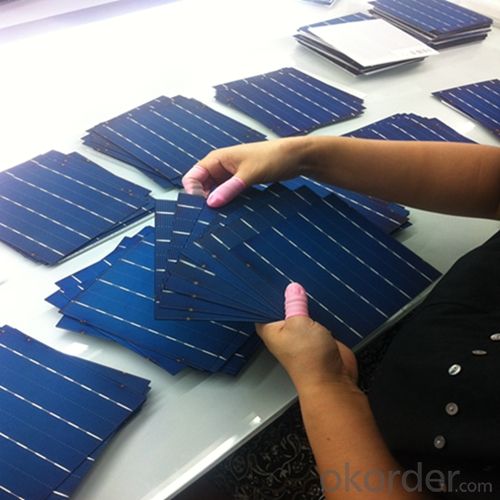
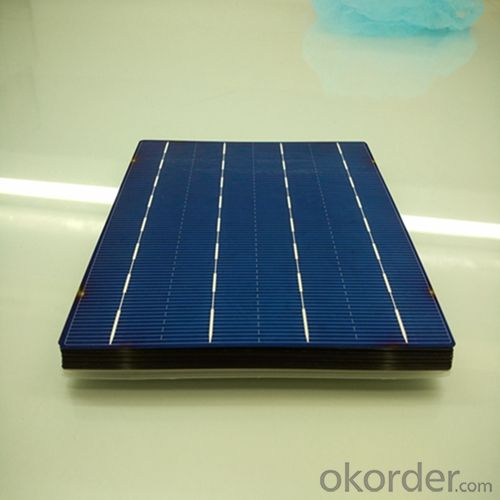
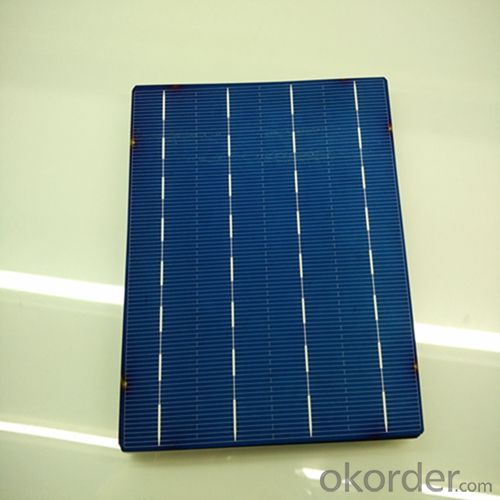
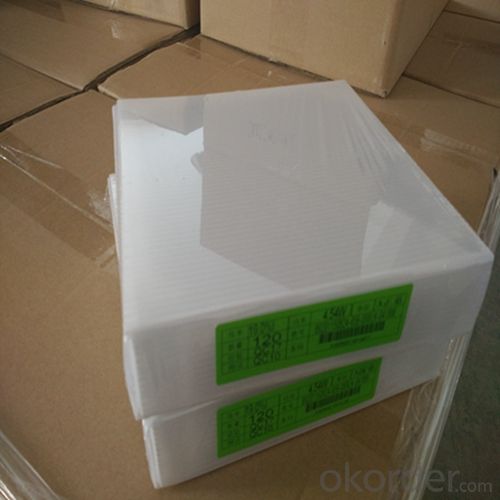
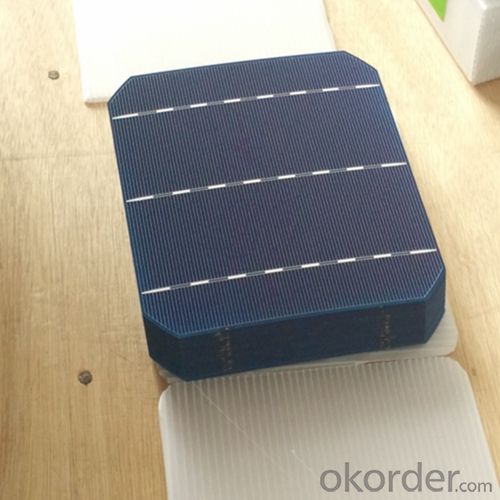
FAQ
Q: What price for each watt?
A: It depends on the quantity, delivery date and payment terms, generally Large Quantity and Low Price
Q: What is your size for each module? Can you tell me the Parameter of your module?
A: We have different series of panels in different output, both c-Si and a-Si. Please take the specification sheet for your reference.
Q: What is your size for each module? Can you tell me the Parameter of your module?
A: We have different series of panels in different output, both c-Si and a-Si. Please take the specification sheet for your reference.
- Q: What is the role of disconnect switches in solar cell systems?
- Disconnect switches in solar cell systems serve as a crucial safety measure by providing a means to isolate the solar panels from the electrical grid. They allow for the safe maintenance, repair, or replacement of solar components without the risk of electrical shock or damage. Additionally, disconnect switches enable efficient troubleshooting and troubleshooting of solar systems by allowing technicians to isolate specific sections of the system for inspection or repair.
- Q: What is the solar cells market in China?
- The solar cells industries has developed over the past 10 years, which means there are now a lot of competition in this industry. However, there are still some market margin because the solar cells industry needs better quality and high technology to be really good.
- Q: Can solar cells be used in shopping centers?
- Yes, solar cells can be used in shopping centers. They can be installed on the rooftops or in parking lots to generate clean and renewable energy to power the shopping center's operations. Solar cells provide cost savings on electricity bills and reduce carbon emissions, making them an environmentally friendly choice for shopping centers.
- Q: How do solar cells handle dust storms or sandstorms?
- Solar cells are designed to handle dust storms or sandstorms by utilizing various protective measures. These measures include coating the surface of the solar panels with specialized materials that repel dust or sand, installing self-cleaning mechanisms that automatically remove any accumulated particles, and positioning the panels at an angle to allow the wind to blow away the dust. Additionally, regular maintenance and cleaning of the solar panels are essential to ensure optimal performance during such weather conditions.
- Q: What is the effect of pollution on solar cell performance?
- Pollution has a significant negative effect on solar cell performance. Air pollution, such as smog and particulate matter, reduces the amount of sunlight reaching the solar cells, thereby reducing their efficiency. Additionally, pollutants like dust and dirt can accumulate on the surface of the solar panels, further decreasing their performance. Overall, pollution hampers the ability of solar cells to generate electricity effectively, highlighting the importance of clean environments for optimal solar energy production.
- Q: Can solar cells be used for powering navigation buoys?
- Yes, solar cells can be used for powering navigation buoys. Solar cells are an environmentally friendly and reliable source of renewable energy that can efficiently convert sunlight into electricity. By harnessing solar power, navigation buoys can operate independently without the need for traditional power sources like batteries or grid connections. This makes solar cells a cost-effective and sustainable solution for powering navigation buoys in remote or offshore locations.
- Q: Are solar cells recyclable?
- Yes, solar cells are recyclable. They contain valuable materials like silicon, glass, and metal, which can be extracted and reused. Recycling solar cells helps reduce waste and conserves resources.
- Q: Are solar cells affected by electromagnetic radiation?
- Yes, solar cells are indeed affected by electromagnetic radiation. They are designed to convert sunlight, which is a form of electromagnetic radiation, into electricity.
- Q: Can solar cells be used in concert venues?
- Yes, solar cells can be used in concert venues. They can be installed on the roofs or surrounding areas of the venue to capture solar energy and convert it into electricity. This renewable energy source can help power various systems within the venue, such as lighting, sound equipment, and other electrical needs, reducing the reliance on traditional energy sources and lowering the environmental impact of the venue.
- Q: What is the impact of snow accumulation on solar cell performance?
- Snow accumulation can significantly reduce the performance of solar cells. The presence of snow on the surface of solar panels prevents sunlight from reaching the cells, thereby reducing their ability to generate electricity. Additionally, the weight of the snow can cause structural damage to the panels and potentially lead to their failure. Therefore, snow accumulation must be cleared promptly to ensure optimal solar cell performance.
Send your message to us
Multijunction Solar Cells:Mono 156x156mm2 Solar Cells Made Low Price
- Loading Port:
- Shanghai
- Payment Terms:
- TT OR LC
- Min Order Qty:
- 4000 watt
- Supply Capability:
- 650000 watt/month
OKorder Service Pledge
OKorder Financial Service
Similar products
Hot products
Hot Searches
Related keywords
